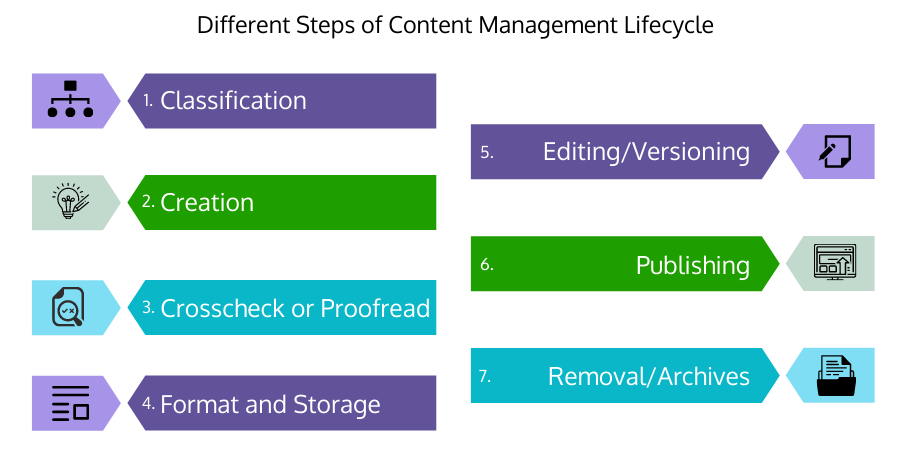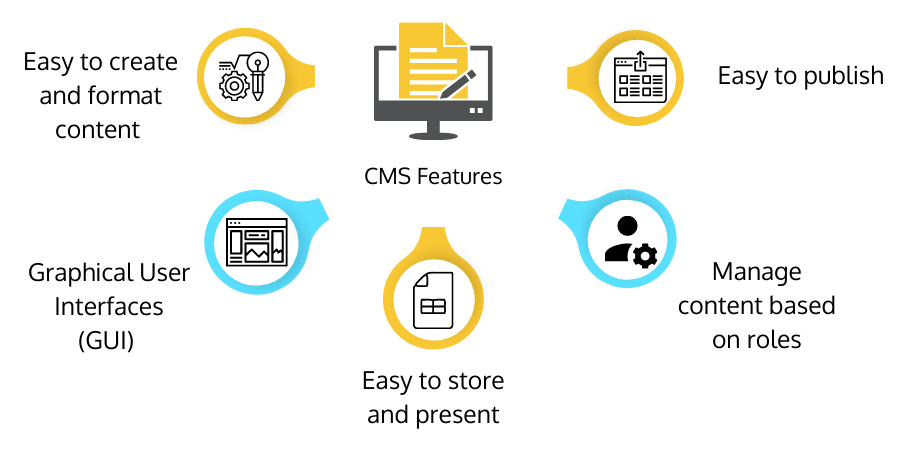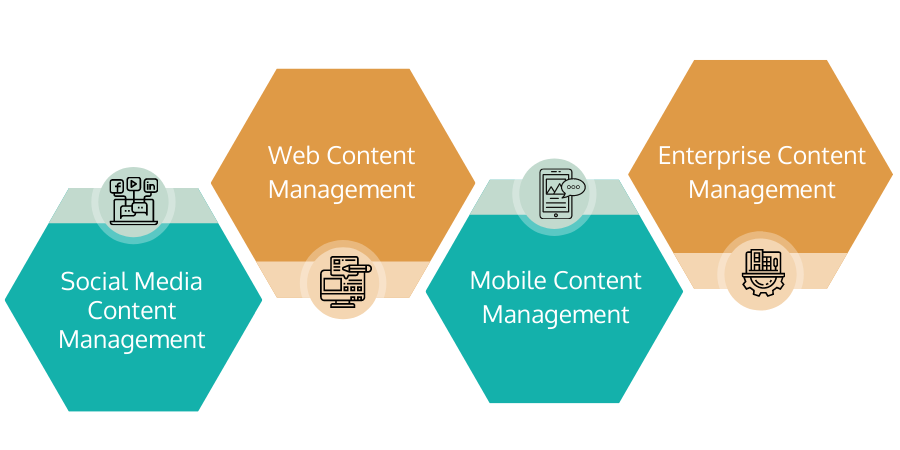
Introduction
We read website content, news, and blogs daily. Do you know at what quantity content is getting created? Every day, roughly 2.5 quintillion bytes of data content get produced by creators. Publishing organizations have to manage these massive amounts of content with an extraordinary increase in online publishing in the 21st century. Content has become the mainstream approach for businesses to interact or connect with their customers, making them aware of their products and services.
According to the Content Marketing Institute, 42 percent of companies do not have the adequate technology to manage their content. Another research by Technavio predicts that the content marketing market is hovering around a growth range of 417.85 billion USD during 2021-2025. Its progressed CAGR rate will be almost 16 percent. This article will give you a walkthrough of content management. Also, we will discuss how content management systems are changing the way companies deal with massive amounts of content.
What is Content Management?
Content management is the process that helps collect, deliver, manage, and publish any information or content in any medium through one or various formats with the help of digital technologies and software. Typically, companies use the term content management in referencing the overall management and administration of the digital content lifecycle. The entire content management process comprises stacking the digital content to permanent storage until deletion.
Today, content drives marketing and has also become a core business element. The content management lifecycle and processes vary according to purpose and the organization's objective. There are different steps and terminologies associated with the content management lifecycle. Let us now take a closer look at these stages:
- Classification: The classification stage defines the taxonomies, designs, and classifies the strategies required to build the content.
- Creation: We prepare the entire content; with proper formatting and editing software.
- Crosscheck or Proofread: We check whether the content is technically and conceptually correct or needs further editing.
- Format and Storage: The content development team decides the content format and storage based on ease of delivery, accessibility, and other factors depending on the organization's requirements.
- Editing/Versioning: This step involves handling numerous content versions, editing, and presentation changes.
- Publishing: In the publishing phase, the content team delivers and releases the final draft or content to the clients.
- Removal/Archives: Making an archive or backup after deleting it from the content management area is another step. The team does this when the content becomes infrequently accessed or obsolete.

What is a Content Management System (CMS)?
A Content Management System (CMS) is an application suite that allows users to create, handle, modify, collaborate, publish, and store the digital content on that application. In a CMS, content is typically stored in a database and exhibited as a presentation layer based on particular templates. Almost all content management systems come with the following features:
- Through CMS, users can easily create and format content without much in-depth technical proficiency.
- CMS systems have Graphical User Interfaces (GUI) that enable content making easier.
- In CMS, the content remains stored in one place and can be used in different ways for the presentation to the users.
- CMS provides workflow assignment features based on permissions. Users can manage content based on roles and privileges such as admins, authors, editors, etc.
- Publishing in an organized manner plus pushing content to release is also easy.

Types of Digital Content Management
Social Media Content Management
Social media is the most influential platform where billions of users share their information. Social media content management enables creating an organizing social media marketing strategy by employing tools like Google Analytics, Sprout Social, etc. All these help engage more target users towards the business through social media.
Web Content Management
Web content is another niche containing textual and visual content published on the websites. Companies prefer to use various web content management systems for creating, managing, and displaying web pages with digital information.
Mobile Content Management
Most people love to read data through various handheld devices such as tablets, smartphones, etc. Mobile content management (MCM) solutions cater to safe access to data on smartphones, tablets, and other devices. It also helps in content storage and sharing.
Enterprise Content Management
An Enterprise Content Management (ECM) solution helps organizations manage and publish data effectively. They come with functionalities geared to edit and handle content, eliminate bottlenecks, and minimize overhead with the version control system, archives, and security.

Conclusion
Successful marketers should consistently keep pushing the trending topics aligned with the business goals through content creation. The Content Marketing Institute analyzed hundreds of thousands of search queries, more than 1,200,000 blog posts and surveyed 1,500+ marketers across the globe. It stated that an effective content marketing strategy could significantly improve various industries in the years to come.
Batoi Digital Publishing Solution Stack bundles a set of content management tools (Batoi CloudSpace Apps) that allows you to publish landing pages, event pages, community pages, training materials, ebooks, blogs, etc. On the other hand, Batoi Hub is a typical example of a content management platform that facilitates magazines and book publishing by content creators.



























 Batoi Corporate Office
Batoi Corporate Office